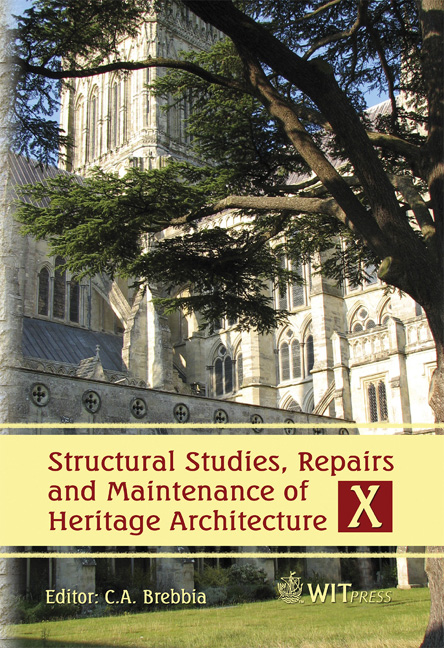Collapse Analysis Of Reinforced And Unreinforced Adobe Masonry Structures Under Earthquake Actions – Case Study: Bam Citadel
Price
Free (open access)
Transaction
Volume
95
Pages
10
Published
2007
Size
4,010 kb
Paper DOI
10.2495/STR070541
Copyright
WIT Press
Author(s)
T. Bakeer & W. Jäger
Abstract
Bam Citadel, the largest adobe masonry building in the world, collapsed under the earthquake of 2003. From a wide range of structures in Bam Citadel two rooms were selected for collapse analysis. A combined FEM/DEM method was used through explicit dynamic LS-DYNA software. A macro modelling strategy has been chosen for masonry modelling. Potential cracks were defined by the aid of CAD software for the whole geometry. Collapse analysis of the structure without reinforcement has been done in order to determine the weak points through the collapse sequence. The collapse of the unreinforced structure was used as a guide for reinforcement locations. Reinforcement trials by glass fiber bars with different locations and values have been tested to show the effect of reinforcement on the collapse behaviour. Finally, glass fiber reinforcement bars have been designed to prevent the collapse. Keywords: adobe masonry, collapse analysis, macro modelling, combined FEM/DEM, explicit dynamic. 1 Introduction Bam Citadel was the largest adobe building in the world, located in Bam, a city in Kerman province of southeastern Iran. It is listed by UNESCO as a part of the World Heritage Site \“Bam and its Cultural Landscape”. This enormous citadel was built some time before 500 BC and remained in use until 1850 AD. On December 26, 2003, the citadel was almost completely destroyed by a 6.5 Richter scale earthquake and more than 90% of the (sun-dried) adobe and
Keywords
adobe masonry, collapse analysis, macro modelling, combined FEM/DEM, explicit dynamic.




